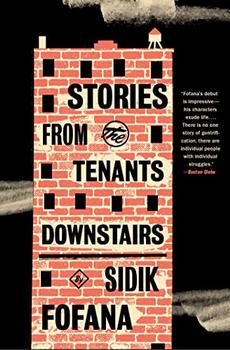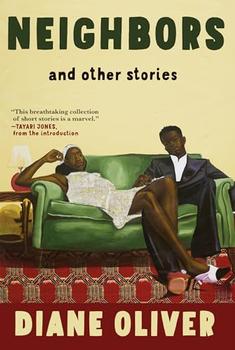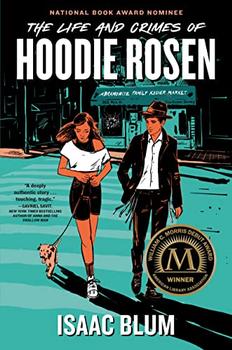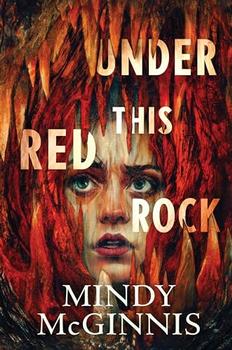Summary | Excerpt | Reading Guide | Reviews | Beyond the book | Read-Alikes | Genres & Themes | Author Bio

Critics' Opinion:
Readers' Opinion:
First Published:
Aug 2022, 224 pages
Paperback:
Aug 2023, 224 pages
 Book Reviewed by:
Book Reviewed by:
Rebecca Foster
Buy This Book
"Everybody got a story, everybody got a tale / Question is: Is it despair or prevail?" These last lines of a short introduction in verse set up Sidik Fofana's aim: to depict the shifting fortunes of the residents of Banneker Terrace in Harlem. The building has new owners who plan to renovate and raise the rates. For many of the tenants, it's already a struggle to make rent each month, even if they hold down two or more jobs. So, while gentrification might be considered a positive thing in a neighborhood for some, it's bad news for the protagonists of these linked short stories.
Illegal hustling starts to look like a tempting option — if not a necessity. In "The Rent Manual" (which has second-person narration, in contrast to the first-person perspective of the other seven stories), Mimi is a waitress at a soul food restaurant and runs an informal home hairdressing business, but also gets drawn into a friend's scheme to resell cheap diapers. She's five months behind on her rent and knows eviction proceedings will start soon if she doesn't do something drastic.
Minor characters from some stories go on to have starring roles in others. For instance, Swan, mentioned as the father of Mimi's son in the first story, becomes the antihero of the second, "The Okiedoke." His friend Boons, newly released from jail after four years, has a hankering for Chinese food. However, the pals find themselves short of cash, so concoct a prank to play on the delivery person to get the food for free.
Endearing scoundrels are also the focus in several later stories. In "The Young Entrepreneurs of Miss Bristol's Front Porch," Kandese has been sent to the country for the summer as punishment for acting out at school. She forms a gang of girls who steal snacks from the general store and resell them. Once they clear $500, Kandese thinks, she'll report their entrepreneurial achievement to the local news station. Darius, the narrator of "Camaraderie," wants to be a stylist to the stars but, in the meantime, lets his neighbors fix him up with a posh escorting gig. In "lite feet," a few of Kandese's classmates start breakdancing on subway trains for tips.
The kids' school, Sojourner Truth Middle, across the street from Banneker Terrace, is another key location. Fofana, himself a Brooklyn public school teacher, wittily recounts the students' all-too-believable hijinks in "Ms. Dallas," an overall standout. The title character, Swan's mother, works as a paraprofessional and casts a jaded eye over the Harvard-educated seventh-grade English teacher's attempts to get his rowdy class to engage with American literature. When the failing school gets 24 hours' notice of an inspection, the students put on their best behavior for a discussion of A Raisin in the Sun — a perfect commentary on this book due to the theme of dreams ending in defeat.
Most of the stories are narrated in thick African American Vernacular English (AAVE). For instance, "finna" is short for "fixing to" or getting ready to do something; "suttin" is Fofana's rendering of "something." The way the characters speak reflects who they want to be, or the generation they belong to. Ms. Dallas and elderly Mr. Murray from "Federation of the Like-Minded" use less slang and fewer obscenities than the teenagers and young adults. The twelve-year-old narrator of "lite feet" writes in phonetic spellings and text speak, while in "Tumble," Neisha, who trained to be a professional gymnast and went to college, does not use AAVE, presumably because she feels that it could hold her back from being successful in the wider world.
Though the lives of these tenants are filled with difficulties — unemployment, dead or absent parents, three people living in a one-bedroom apartment, no tangible prospects for the future — they are not miserable. Their optimism and sheer joy shine through in their picaresque antics. Fofana even references the lyrics of the Journey song "Don't Stop Believin'" twice, as if to sum up his characters' irrepressible spirits.
Lively language; feisty characters that might remind you of your own relatives, former classmates, or neighbors; sharp, varied plots; and timely themes: this was a pure pleasure to read. It's a stellar debut from a very talented writer. Fofana should win all the prizes.
![]() This review was originally published in The BookBrowse Review in September 2022, and has been updated for the
August 2023 edition.
Click here to go to this issue.
This review was originally published in The BookBrowse Review in September 2022, and has been updated for the
August 2023 edition.
Click here to go to this issue.

If you liked Stories from the Tenants Downstairs, try these:

by Diane Oliver
Published 2024
A bold and haunting debut story collection that follows various characters as they navigate the day-to-day perils of Jim Crow racism from Diane Oliver, a missing figure in the canon of twentieth-century African American literature, with an introduction by Tayari Jones

The Life and Crimes of Hoodie Rosen
by Isaac Blum
Published 2023
The Chosen meets Adam Silvera in this irreverent and timely story of worlds colliding in friendship, betrayal, and hatred.





The House on Biscayne Bay
by Chanel Cleeton
As death stalks a gothic mansion in Miami, the lives of two women intertwine as the past and present collide.

The Flower Sisters
by Michelle Collins Anderson
From the new Fannie Flagg of the Ozarks, a richly-woven story of family, forgiveness, and reinvention.

The Funeral Cryer by Wenyan Lu
Debut novelist Wenyan Lu brings us this witty yet profound story about one woman's midlife reawakening in contemporary rural China.
Your guide toexceptional books
BookBrowse seeks out and recommends the best in contemporary fiction and nonfiction—books that not only engage and entertain but also deepen our understanding of ourselves and the world around us.